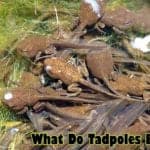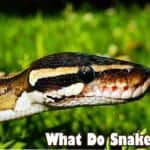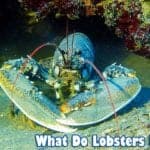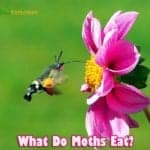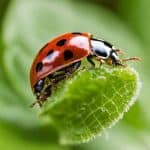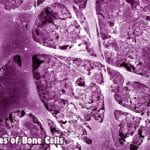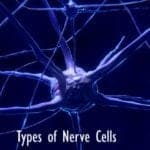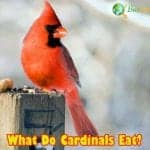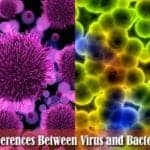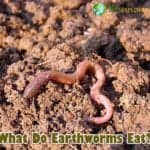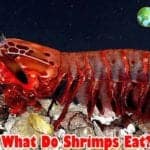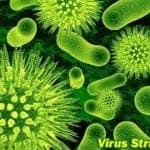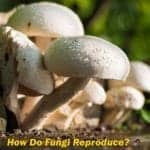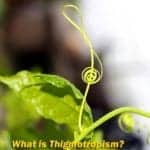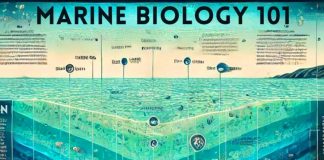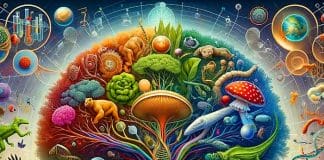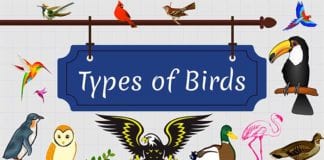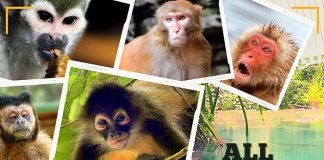top - search results
If you're not happy with the results, please do another search
What Do Tadpoles Eat?
A tadpole refers to the larval stage of the members of class Amphibia. Explore what do tadpoles eat, tadpoles diet by types, what eats tadpoles & more here.
What Do Snakes Eat?
Snakes are strict carnivores. Learn what do snakes eat, snakes diet by types, how do snakes hunt, what eats snakes, and how often snakes eat.
What Do Seals Eat?
Seals are classified as semi-aquatic mammals classified under the same group as walruses &sea lions. Explore what do seals eat, seal types by diet & more.
15 Leading Ecology News of 2018
It is a truth universally acknowledged by scientists: climate change is real as well as global pollution of air, water, and soil. In order for us to survive, we need to know as much as possible about the dangers of today.
15 Latest Inventions in Botany For 2018
Botany is even more fascinating now than it used to be in previous centuries. Here are the 15 interesting and latest inventions in botany for 2018.
15 Wonderful Biotechnology Inventions In 2018
Biotechnology is the new magic of the 21st century. Some of the biotech techniques include nanotechnology and tissue engineering which provide new cancer treatments, assist in water security and are slowly becoming crucial in sustainable industrial development. Here are the top 15 biotechnology news for 2018.
What Do Rhinos Eat?
Rhinoceros (aka) rhinos are the second-largest land mammal. Explore what do rhinos eat, rhinos diet by types, what eats rhinos & rhinos diet-related info.
What Do Hippos Eat?
Hippos are the third-largest land animals after elephants and rhinos. Explore what do hippos eat, their diet by types, how often, how much and what eats hippos.
What Do Beavers Eat?
Beavers are some of the largest animals classified in the order Rodentia. What do beavers eat? Explore all beavers diet related info here.
What Do Lobsters Eat?
Lobsters are invertebrates classified as crustaceans. Learn what do lobsters eat, lobsters diet by types, what eats lobsters and more.
What Do Weasels Eat?
Weasels are small animals (mammals) classified in the genus Mustela. Explore what do weasels eat, weasels diet by types, what eats weasels & diet-related info.
What Do Moths Eat?
Moths are insects categorized under Lepidoptera that overlap w/ butterflies. Learn what do moths eat, their diet by type & what eats moths.
What Do Woodpeckers Eat?
Woodpeckers are magnificent birds classified under the family Picidae and sub-family Picinae. Explore what do woodpeckers eat and their diet-related info.
What Do Ladybugs Eat?
Ladybugs are voracious predators with a taste for aphids, mites, scales, and other soft pests. Learn all about the carnivorous diet of ladybugs, their hunting strategies, seasonal feeding, and importance as natural pest control.
Types of Bone Cells
The bones are a core component of a living body that holds the structure of muscles and organs. Learn the three types of bone cells, their history, structure, and functions.
How to Become an Anesthesiologist?
An anesthesiologist is a medical professional that specializes in sedation and pain reduction. Explore the steps on how to become an anesthesiologist.
How To Become An Allergist?
An allergist is a healthcare professional who is specializing in the treatment of allergies. Explore how to become allergist, expected salary & other info.
Introduction To Fermentation Biology
Fermentation biology is an energy releasing process that brings about chemical changes in raw food. There are 2 types of fermentation namely Lactic Acid Fermentation & Alcoholic Fermentation. Explore the real-life applications of fermentation in domestic, industrial and medical fields.
Explore The Cells of The Epidermis
The skin is one of the most important organs in the human body. Explore the 4 cells of the epidermis (types of skin cells), layers of skin, and their functions.
Explore Different Types of Nerve Cells
The nervous system is a network of interconnecting structures composed of types of nerve cells called Neurons and Glial cells. Explore the nerve cell functions in detail.
How Many Languages Do Animals Speak?
Is communication exclusive only to humans? If animals can speak, how many languages do they speak? Find out all the answers here.
15 Best Microbiology Textbooks
Microbiology looks at the study of microscopic organisms such as viruses, bacteria, protozoa, archaea, and fungi. Here are 15 best microbiology textbooks which one can study for basics & advanced knowledge of diagnostic and systemic microbiology.
17 Major organs on left side of body
The human body is known to display symmetry. When you divide the body into two, each side would be the exact copy of the other. While this is true in the case of the external human body, the organization of the internal organs is different. Discover the 17 major organs on the left side of the body.
What Do Killer Whales Eat?
Killer Whales also referred to as orcas, are sea mammals. Explore what do killer whales eat, diet by their types, what eats killer whales & other questions.
What Is Facilitated Diffusion & Their Importance, Experiments, and Examples?
In living organisms, the diffusion of substances is mediated by the cell membrane. By definition, facilitated diffusion is a type of passive transport which utilizes 'agents' known as channel proteins and carrier proteins to speed up the transport process. Explore the importance, experiments & examples of it.
Biology Boomtowns: 10 Best US Cities for Job Opportunities
Biology is an extensive body of knowledge and one of the most relevant disciplines. If you are currently living in the US (or planning to move here) and are looking for a biology-related job, listed below are the best US cities for biology job opportunities.
Woolly Mammoth Clone Project: Can It Be Resurrected?
According to studies, the planet is now in the midst of mass extinction for the sixth time. Among many species in the animal kingdom, the Woolly Mammoth and the Passenger Pigeon are the top priority for resurrection in the science communities. Explore the Woolly Mammoth Clone project goals and drawbacks here.
Ribosomes Function: The Cell’s Protein Machinery
Tracing its origin to more than 3 to 4 billion years ago, ribosomes are thought to have risen from the world of the ribonucleic acid (RNA). Explore more about this amazing "protein machinery" as we uncover ribosomes function, structures, and variations in prokaryotes and eukaryotes.
Designer Babies Pros and Cons
About four decades ago, the first ever test tube baby was created using the process of IVF. Like any scientific innovations, the technology of creating designer babies has a wide variety of promising advantages and at the same time possible disadvantages too. Explore the designer babies pros and cons here.
Are Elephants Endangered?
Distinguished by their long trunks and huge bodies, the largest land animal is under serious threats. Explore why are elephants endangered in detail here.
15 Best Zoos in the USA
Zoos serve as a home for numerous animals. It is no denial that the United States is a home to some of the world-class zoological parks in the world. To help you choose the perfect (and possibly the nearest) zoo to visit, here are the top 15 best zoos in the US with direct website references.
What Do Elephants Eat?
Elephants are the largest living mammals on land. On this page, explore what do elephants eat, diet by their types, how often, when & what eats elephants.
What Do Skunks Eat?
Skunks are small furry animals notable for their black and white-colored fur. These animals are omnivorous. Explore what do skunks eat & their diet by types.
What Do Moles Eat?
Moles are the small mammals who spend most of their time underground. Explore what do moles eat, types of moles, and what eats moles on this page.
What Do Alligators Eat?
Explore what do alligators eat and their diet types. Alligators are primarily carnivores feeding on prey like fish, mollusks, other reptiles, and birds.
What Do Armadillos Eat?
Armadillos are endemic to the Americas. Learn what do armadillos eat by their types. Armadillos are omnivores (a diet of both meat & plants materials).
What Do Hummingbirds Eat?
Explore what do hummingbirds eat here. Hummingbirds mainly eat nectar from flowers. They further supplement this diet by feeding on a wide array of insects.
What Do Wild Rabbits Eat?
Wild rabbits draw their genesis from Europe & Africa. Explore what do wild rabbits eat in the wild, types of wild rabbits & their diets, and predators here.
What Do Salamanders Eat?
Salamanders are classified as amphibians. Explore what do salamanders eat, types of salamanders and their diets. Salamanders are mostly carnivorous.
Explore Desert Birds & Their Adaptations
A desert is a barren landscape area with little to no water (no precipitation) found which makes the living condition extremely hostile for plants and animals. Explore 15 different types of desert birds and their adaptations on this page.
Explore 9 Stomach Flu Vs Food Poisoning Differences
Food contamination could be either physical, chemical, or biological. Both stomach flu and food poisoning are food-borne illnesses that have discernable differences between them. Explore stomach flu vs food poisoning from 9 different aspects.
Is MRSA Contagious? Explore the Etiology of MRSA Infection
MRSA infection is an infection caused by the methicillin-resistant strain of Staphylococcus aureus. Explore more about the etiology of MRSA infection, is MRSA contagious, its history, signs, symptoms, diagnosis, and treatment options.
What Do Cardinals Eat?
Cardinals are also referred to as redbirds. These perching birds found in North and South America are omnivores. Explore what do cardinals eat and more.
What Do Manatees Eat?
Manatees are large mammals that are also referred to as sea cows. Explore what do manatees eat, their diet by types, what eats manatees and more here.
How Are Viruses Different From Bacteria?
While it is true that viruses and bacteria are often (and sometimes mistakenly) associated with diseases, many find them to be seemingly indistinguishable. Explore how are viruses different from bacteria at a microscopic level from 15 various aspects.
What Do Gorillas Eat?
Gorillas are warm-blooded mammals occupy the forest floor layer of the tropical rainforests. What do gorillas eat? Are gorillas herbivores or omnivores? Explore the answers to all these questions & more.
What is Genetic Determinism?
An emerging idea in the field of genetics called Genetic Determinism (Biological Determinism) is a concept that entertains the belief that human behavior is governed and controlled by the action of genes, and bypasses the role the environment plays. Learn definition, history, types & concepts of Genetic Determinism.
What Do Earthworms Eat?
Earthworms are believed to be omnivorous, feeding on plants and animals. Explore what do earthworms eat, earthworms diet by types & what eats earthworms.
Elephant Evolution
Elephant Evolution: Elephants evolved over a period of millions of years. It took 60 million years for elephants to evolve their long tusks and trunks. The earliest ancestors of elephants looked nothing like elephants. By evolution, bodies of animals became larger and longer. Explore the ancestors of elephants here.
Explore What Is Cell Theory & Parts of Cell Theory
All living organisms on the planet are made up of tiny individual units called cells. Without these units, living organisms cannot function the way they do now. In this article, we will explore the aspects and 3 parts of cell theory, its rivaled history, and many versions, as well as the exceptions to cell theory.
Can Animals Have Down Syndrome?
Animals and humans can share a host of different diseases and illnesses. Although they may manifest and present differently in the two, animals, too, can acquire genetic disorders. Can animals have Down syndrome? Explore reports on animals having Down syndrome with good illustrations.
What Do Shrimp Eat?
Shrimps are crustaceans with long slender bodies. Their muscular abdomens come in handy during locomotion. Explore what do shrimps eat & what eats shrimps.
Explore Types of Antibodies in Blood, Their Structures & Functions
The immune system of the body mediates disease-fighting mechanisms using two different types of mediators. There are broadly two types of cells that are involved in the immune reaction – T cells & B cells. Explore different types of antibodies (or immunoglobulins), their properties, structures and functions in detail.
Explore Virus Structure, Viral Structure Types, and Functions
A virus is an infectious non-living particle that cannot survive on its own. The life cycle of the virus is a series of steps that enable the virus to infect a host and replicate itself. Explore virus structure, structure of virus, viral structure types, and functions of virus structure.
How Do Fungi Reproduce?
Fungi are mostly multicellular, heterotrophic, complex organisms that belong to the eukaryotic kingdom. Being an eukaryote, how do fungi reproduce? Explore how eukaryotes reproduce in general and different types of fungi reproduction with good examples & more on this page.
Explore Vesicles, Types & Their 9 Major Functions
Anatomically, a cell comprises various organelles that function in an organized manner to carry out metabolic processes. Among these organelles, a vesicle is a tiny intra or extracellular fluid structure in a cell. Explore vesicle functions and types of vesicles in detail here.
Explore The World of Thigmotropism
Thigmotropism refers to the movement of a plant in response to the stimulus of touch or contact. It is also called Haptotropism. Explore the world of Thigmotropism in this page, why and how it occurs in plants, types of thigmotropism and good examples.
What Do Bearded Dragons Eat?
The bearded dragon gets its name from spiny scales. In general, bearded dragon is an omnivore. Explore what do bearded dragons eat by their types and more.
Where Do Stem Cells Come From?
Stem cells are a group of cells found at specialized sites in the body that have the potential to develop into different cell types but where do stem cells come from? Let's explore what is stem cells, types of stem cells, stem cell origin and their benefits/functions in detail.
Spermatogenesis: The Generation of Sperm Cells
In the animal kingdom, the union of the sperm and egg is the foundation of reproduction of the species. Spermatogenesis is the production of sperm from the primordial germ cells within the male reproductive organs. Learn the process of spermatogenesis & how simple germ cells develop into the male gamete, the sperm.


